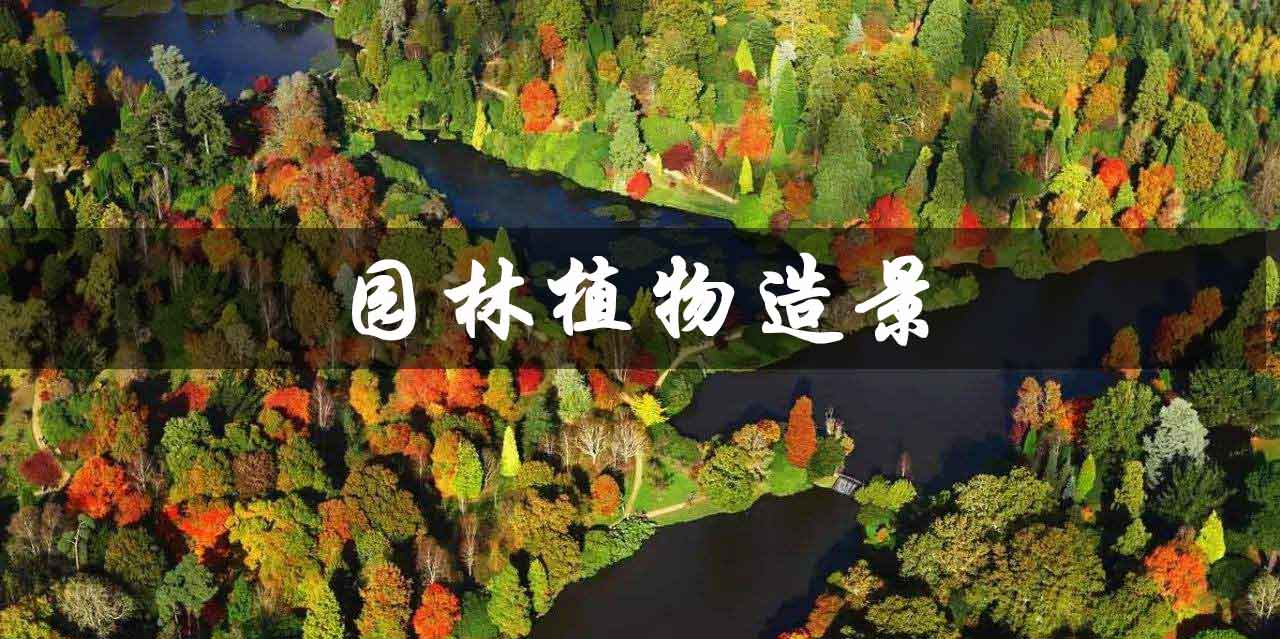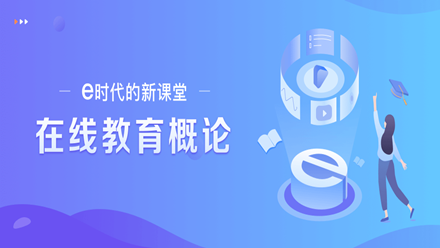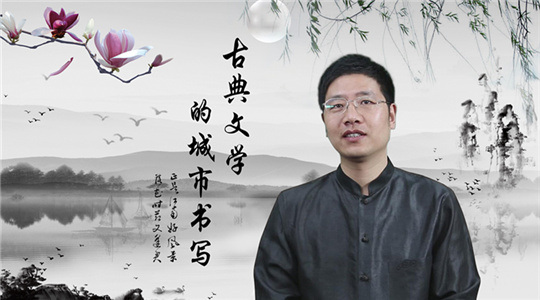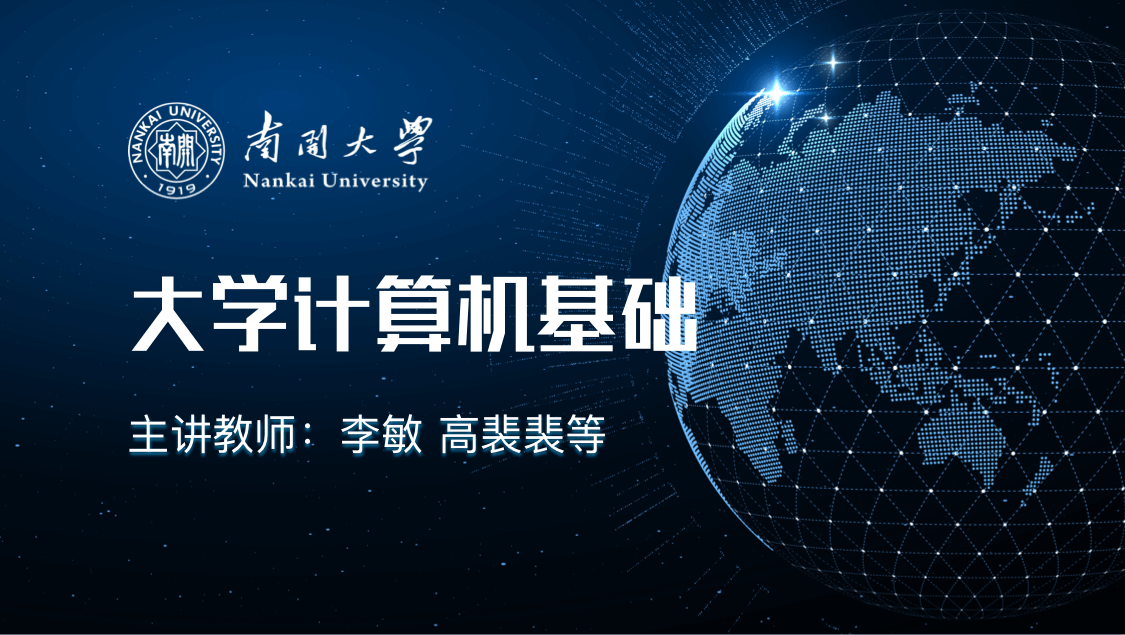
当前课程知识点:e时代的新课堂——在线教育概论 > 第一章 解读在线教育 > 1.2.1概念解析 > 1.2.1概念解析
各位同学大家好
Hello, everyone.
今天是我们第一周的第二讲
This is our second lecture for the first week.
我们来一起讨论一下
Let's talk about
什么是在线教育
what online education is.
那在线教育这个词
Online education
它实际上是一个组合词
is actually a phrase
它包括比如在线和教育
formed by combining two words:
这两个词组合而成的
"online" and "education".
或者我们有的时候
You know, or sometimes,
也有人把它理解成
we interpret
教育的这个在线的过程
online education
就是在线教育
as the online process of education.
因为这个如果再往下拆
We're not going to
就变成字了
break down the words further,
就不是词了
or we'll end up with nothing but letters.
所以这个我们要解读
Therefore, to interpret
什么是在线教育
the concept of online education,
我们就要看教育是什么
let's start with the meanings
在线又是什么意思
of "online" and "education".
第一个我们来看一下什么是教育
First, let's talk about what education is.
最近我也有一门在北大的课程
Recently, a course of mine at Peking University
我们就在中国大学慕课上线
went online on the Chinese University MOOC.
其中有一位同学他是学教育学的
One of the students majoreds in pedagogy.
他在讨论区里面就给我们列了
In his comments,
这么一些教育的定义
he listed some definitions of education
包括苏格拉底的 柏拉图的
given by Socrates, Plato,
亚里士多德的
Aristotle,
福禄贝尔
Fr?bel, Montessori,
还有裴斯泰洛齐这几位
Pestalozzi and others.
就是大牛人的对教育的定义
Definitions of education given by these critical peoplebig names
那么我就列在屏幕上
are listed on the screen.
大家可以自己看一下
Take a look for yourself.
他们的这些定义
In my opinion,
基本上主要的
they defined education
在我看来它是从What is
from the perspective
就什么是的角度去定义教育
of "what is."
那另外一个角度
On the other hand,
我们要解读什么是在线
we have "online" to interpret.
在线它涉及到的是一个什么问题
The word concerns another question,
就是How to
which is "how to,"
就是这个教育到底怎么实施
namely how to practice education?
那这个实施的方式
In terms of how to practice it,
可能在今天互联网时代
we can take it online
我们就可以把它通过在线的方式
to practice education and spread the process
来实施和传递这个教育的过程
in the internet era.
那实施它包括什么
So, what is involved in the practice of education?
我们如果再拆开
If we break it down
再进一步解读的话
and interpret it further,
你会发现教育本质上
we'll find that
为了达到前面我们提到的
to achieve the goals
那些教育的目的
of education,
就育人
namely cultivating people
还有社会化的这些目标的话
and for socializing purposes,
其实我们要涉及到一个什么问题
we have to deal with one question:
就是经验和智慧
how are experience and wisdom
在人与人之间和代际之间的
expressed, passed on and accumulated
这样一个表达传递和积累的过程
among people and between generations?
所以在这个传递过程
Then, in the process of passing on….
如果我们再进一步拆开
Let's break it down further
就怎么传递呢
and look into how to pass on knowledge.
这里面当然第一个要包括
The first element involved
知识的这个表达
should be the expression of knowledge.
我们通过什么方式来表达
How do we express knowledge?
比如说我现在这样的
Do we express it orally,
通过口语的方式表达
like what I am doing now?
还是通过文字的方式表达
In written text?
还是在互联网上
Or, by means of videos
通过视频的方式表达
on the internet?
所以这个其实涉及到
It concerns the technical approaches
我们在实施教育过程中
in practicing education,
我们要关注的一个技术性的问题
to which we should pay attention.
也就是How to的第一个构成要素
It's the first aspect of "how to."
那么第二个构成要素当然是这个
The second aspect concerns
表达完了这个知识怎么样传递
how to pass on knowledge after it's has been expressed.
你比如口传时代的诗歌
For example, in the oral tradition era,
它要通过唱的方式传递
poems were passed on through singing.
那印刷时代它要通过印成书
In the printing age,
然后通过书店
human knowledge was passed on
整个这样一套出版方式
in the form of printed books in bookstores.
去传递人类知识
A whole publishing process was in play.
除此之外
Additionally,
我们必不可少的
when we discuss
也是我们今天在讨论
online education today,
在线教育的时候
there is one thing that is essential
大家要特别注意的
and requires our special attention.
就是人与人之间的
It's the exchange and communication
这样一个交流和沟通
among people.
陈寅恪先生曾经说过一句
Mr. Chen Yinke once
非常有名的话
famously said,
它叫纵有名山藏这个史稿
"Even if historical records are well preserved in mountains,
传人难遇又如何
we cannot do a thing if no one can read them."
就是你书藏下来了
Books may be preserved well,
但是如果没有人能够解读它的话
but if no one can interpret them,
这个知识也很难传递下去
the knowledge is hard to be pass passed on.
在整个人类的四大文明古国里面
Actually, ofamong the four ancient civilizations of mankind,
其实一直到现在
the Harappan language of ancient India
印度的那种哈拉本的古文字
hasn't been deciphered
到今天都是没有被解读出来
to this day.
所以用哈拉本文字所记录的
As a result,
那种印度历史上的事情
no one can interpret
到今天也仍然是没有人
those Indian historical records
能够解读它
to date.
也不知道印度在历史上
We don't know
发生什么事情
what happened in India during that period.
所以我们再重复一下
So, let me repeat it.
在How to
When it comes to
就如何做教育这件事情上
how to practice education,
我们必不可少的要考虑到
we must consider
我们的知识怎么表达
how to express our knowledge.
表达出来的知识
Next, we should consider how to transmit and spread knowledge
我们又怎么样去传递和传播
that has been expressed.
第三个
Thirdly,
我们又必须要有一批人
we must have a group of people
这个因素在中间去解读
to carry out the interpretation.
否字的记载可能会变成一种死的
Otherwise, those records
没有人能够认知和解读的
may just be some symbols
一种符号
that no one can understand.
那么我们把这三个要素
If we combine the three elements together
我们如果再进一步
and go further
把它构成一个要素
to make them one,
那么这样三个要素构成了一种
we'll find that the three elements
什么样的How to的一种
form an approach to explain
传递的途径
"how to" transmitting knowledge.
其实我们所采用的
In fact, it is something
就是我们今天常常在提到的
we often discuss today:,
教育技术
educational technology.
那么这个教育技术它更学术一点
We have a more academic and professional term
专业化的描述
for educational technology,
它应该叫Media technology
that is
就是媒介技术
media technology.
这个媒介技术它涉及到的
Media technology has
包括它比如说有这样几个子维度
several sub-dimensions,
包括符号 载体 复制方式
including symbols, carriers, replication methods
还有人和人的这种
and methods of communication
交流沟通的形态
among people.
按照20世纪新出现的
In the 20th century,
一个学术的流派
a new school of thought emerged,
就是媒介环境学
otherwise known as media ecology.
这里面有很多著名的人物
It has witnessed many key well-known namesfigures,
比如说特别著名的麦克卢汉
including McLuhan
尼尔·波兹曼这些人
and Neil Postman, who are especially noted..
按照媒介环境学派对人类历史的
According to the understanding school's
这样一个梳理和解读
understanding of historical records in media ecology,
他们认为
throughout the history
在人类整个发展的历史中
of human development,
我们曾经使用过五种
we've used
主要的媒介技术的过程
five major media technologies.
比如说最早的就是口头语言
The earliest one is the oral language.
第二种对人类历史影响非常大的
The second technology, handwriting,
一种技术就是手工书写
has had a great impact on human history.
第三种实际上是15世纪到现在的
The third is printing technology,
印刷技术
which has been developing from the 15th century to the present.
这个印刷技术一直到今天
To this day, printing remains
Printing remains to this day,
是对我们今天的整个
a media technology
以班级授课制为核心的
with the greatest influence
现代学校制度影响最大的
on the modern school system
这样的一种媒介技术
based onof classroom education.
之后就出现了
Then came
我们今天人都非常熟悉的
radio and television,
广播电视
with which we are familiar today.
还有后来的互联网
And later, the Iinternet came into play.
所以我们为了帮助大家理解
To help you
和解读在线它是一种
understand and interpret
什么样的一种
the meaning of the word "online"
教育的新的构成要素的话
as a new component of education,
我们带领大家简单的回顾一下
we'll briefly review
在历史上
how education was practiced
在在线这种技术出现之前
Historicallythroughout history
那我们的教育是怎么样
before online technology
去具体实施的
was invented.
-混合式教学该怎么做?与清华老师一起聊聊
-看清华老师如何进行大班混合式教学
--Video
-如何做好混合式课堂的互动
--Video
-与清华大学老师聊聊慕课独特的教学设计
-“挑战60s”授课短视频大赛
--Video
-与清华大学老师聊聊慕课的制作与运营
--Video
-1.1在线教育发展现状
--html
-1.1.1在线教育带来了e时代的新课堂
-1.1.2师生说
--1.1.2师生说
-1.1.3我国在线教育的特点
-1.2什么是在线教育
--html
-1.2.1概念解析
-1.2.2教育的技术发展史
-1.2.3在线教育的五要素模型
-1.3在线教育对教师的机遇与挑战
--html
-1.3.1机遇篇
--1.3.1机遇篇
-1.3.2挑战篇
--1.3.2挑战篇
-1.4在线教育发展的历史
--html
-1.4.1二十世纪的发展
-1.4.2二十一世纪的发展
-1.4.3在线课程三要素
-1.4.4虚拟教育组织
-1.5课程内部体系和外部关系
-第一章 解读在线教育--单元习题
-讨论题
-2.1数字时代带来教育变革
-2.2在线教育更适应学生的学习需求
--html
-2.2.1教育需求的发展
-2.2.2学习风格与学习类型
-2.2.3多模态数据分析学生学习行为与需求
-2.2.4教育目标
-2.2.5拓展学习时空,促进深度学习
-2.2.6自主学习系统的案例分享
-2.3在线教育帮助教师成长
-2.4学校和国家为什么要做在线教育
-单元习题--作业
-3.1高等学校在线教育发展
-3.1.1学校现状
-3.1.2平台与联盟
-3.2不同类型的教师都能得益于混合式教学
-3.3混合式教学的好处
-3.3.1当前的教学问题
-3.3.2教师和学生的收益
-3.4混合式教学的关键细节与常见误解
-3.4.1关键细节一
-3.4.2关键细节二
-3.4.3关键细节三
-3.4.4误解篇一
-3.4.5误解篇二
-3.5智慧教学工具的发展
-3.5.1综述篇
--3.5.1综述篇
-3.5.2雨课堂的诞生
-3.5.3雨课堂的功能
-3.5.4课堂教学需要雨课堂
-3.5.5雨课堂解决面授时间紧张的问题
-3.5.6雨课堂解决课前课中课后的学习效果问题
-3.5.7课前课中课后雨课件设计要点
-第三章 高校在线教育进行时--单元习题
-讨论题
-讨论题
-4.1教育实践的展望(一) 教育创新
-4.2教育实践的创新(二) 教育技术与决策
-4.3教育理论的热点趋势
-第四章 在线教育的未来--单元习题
-讨论题
-5.1邓俊辉老师《数据结构》与《计算几何》教学案例
--html
-5.1.1慕课制作与使用心得(一)
-5.1.2慕课制作与使用心得(二)
-5.2张瑜老师《思想道德修养与法律基础》教学案例
--html
-5.2.1教学理念与混合式教学的主要环节
--Video
-5.2.2章节实例
-5.3杨芳老师《大学英语》教学案例
--html
-5.3.1混合式教学设计心得
-5.3.2 University单元教学设计
-5.4于歆杰老师《电路原理》教学案例
--html
-5.4.1小容量班级完全翻转课堂
-5.4.2大容量班级部分翻转课堂
-5.5郑莉老师《C++语言》教学案例 雨课件样例及校内教学心得分享
--Video
-单元习题--作业






